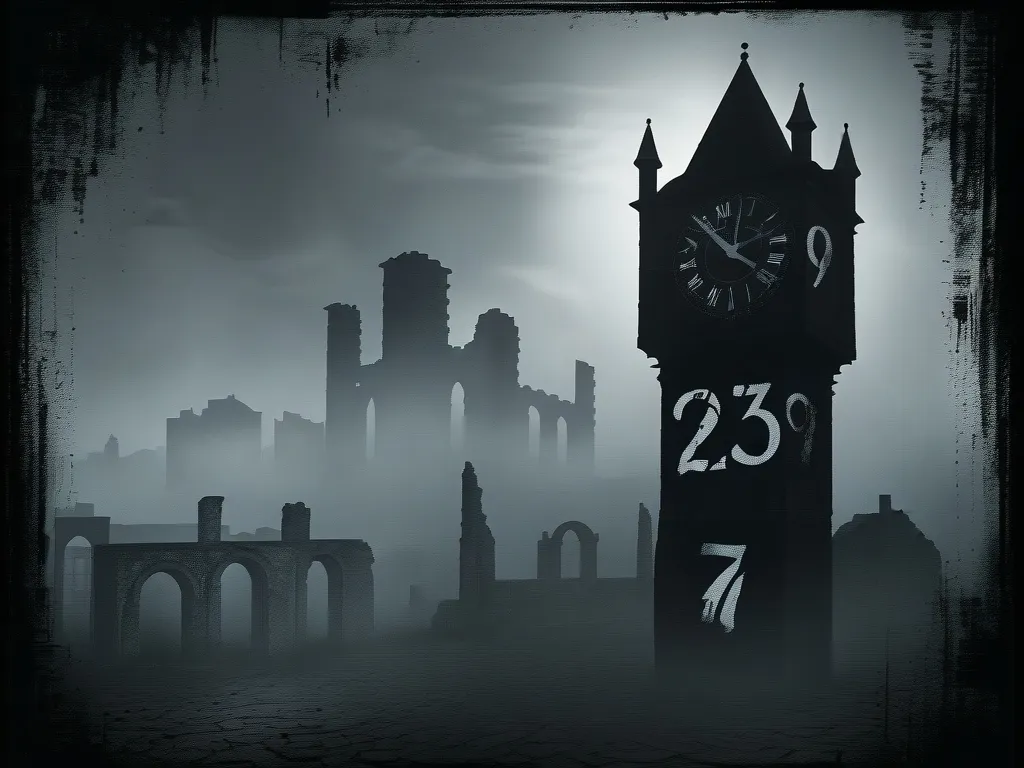Have you ever stopped to think about the history we learn in school and wonder if there’s more to it than what’s written in the textbooks? The idea that whole chunks of history might have been deliberately erased or manipulated is a fascinating, if somewhat unsettling, concept. This notion is at the heart of the Phantom Time Hypothesis, a theory that suggests certain decades might have been artificially inserted or deleted from our timeline.
To delve into this mystery, let’s start with the basics. The Phantom Time Hypothesis was first proposed by a German historian named Heribert Illig in the 1990s. Illig argued that the Early Middle Ages, specifically the years between 614 and 911, never actually existed. Instead, he claimed that these centuries were fabricated to align the calendar with the Anno Domini (AD) era.
One of the key pieces of evidence Illig cited was the lack of archaeological evidence from this period. If you visit many historical sites in Europe, you’ll notice a curious gap in the architectural and cultural artifacts between the 6th and 10th centuries. This gap is often attributed to the Dark Ages, a period of supposed cultural and economic decline. However, Illig suggested that this gap might not be due to a decline, but rather because these years never occurred.
Another intriguing aspect is the discrepancy in the dates of historical events. For instance, the construction of certain buildings and monuments seems to jump abruptly from the 6th to the 10th century without any intermediate stages. This could be seen as evidence that time was manipulated, or it could simply be a result of poor record-keeping and the destruction of historical documents over the centuries.
Let’s consider a more personal perspective. Imagine if you were living in a small village in medieval Europe. Your daily life would be marked by routine tasks like farming, crafting, and social interactions. Now, imagine that one day, you wake up and find that several years have passed, but there’s no memory of them. This is somewhat akin to the experience described in the forgotten medieval habit of biphasic sleep, where people would sleep in two shifts, waking up in the middle of the night to perform various tasks before returning to bed. This natural wakefulness period, known as “the watch,” was a time for reflection, work, or even mischief. It’s a reminder that our perception of time and how we divide our days is not as fixed as we might think.
The idea of manipulated time also raises questions about power and control. If certain decades were indeed erased or inserted, who would have had the power to do so? And why? One possible answer lies in the realm of political and religious power. Throughout history, rulers and religious leaders have often altered records to suit their agendas. For example, the Roman Catholic Church has been known to adjust the calendar to align with its own festivals and holidays.
However, the Phantom Time Hypothesis is not without its critics. Many historians argue that while there may be gaps in our knowledge, there is no conclusive evidence to support the idea that entire centuries were fabricated. Archaeological findings, though sometimes sparse, do exist for the Early Middle Ages, and historical records from various cultures around the world corroborate the timeline we currently accept.
Despite the skepticism, exploring this hypothesis encourages us to think critically about our understanding of history. It reminds us that history is not a fixed narrative but a complex tapestry woven from various sources, each with its own biases and gaps. For instance, the history of the Tupinambá people in Brazil or the local customs in 19th-century Muscat, Oman, highlight how different cultures have their own unique ways of dividing time and experiencing the world.
The concept of time manipulation also touches on broader themes of memory and remembrance. Music, for example, has long been a way to preserve historical memories and emotions. The works of composers like Richard Strauss, Schoenberg, Britten, and Shostakovich serve as powerful reminders of the past, encapsulating the traumas and triumphs of their times. In a similar vein, the stories of forgotten heroes and events, such as those detailed in historical vignettes, bring to light the complexities and richness of our collective past.
In conclusion, the Phantom Time Hypothesis is a thought-provoking idea that challenges our conventional understanding of history. While it may not be supported by concrete evidence, it serves as a reminder of the fluidity of historical narratives and the importance of questioning what we are told. As we delve into the mysteries of our past, we uncover not just facts and dates, but also the human experiences and emotions that shape our understanding of time itself.
So, the next time you find yourself lost in the pages of a history book or wandering through a historical site, remember that there might be more to the story than what meets the eye. The past is a labyrinth of stories, some of which may be hidden or distorted, but all of which contribute to the rich tapestry of human history. And who knows? Perhaps in exploring these forgotten echoes, we might uncover a piece of our own forgotten past.





